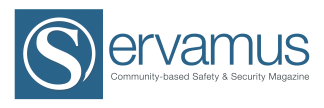By Kotie Geldenhuys
Terrorists and extremists have set up shop on the Internet: to recruit new members, spread their ideologies, and plan and coordinate activities across the world. The Internet provides a convenient platform for these groups to connect with like-minded individuals across the globe and amplify their messages. The dark web has become the vein feeding terrorist activities. The size and scope of these dark corners of the web are vast and disturbing which have raised significant concerns for governments, technology companies, and society.
Terrorists have become active on various online platforms since the late 1990s. However, the surface web was found to be too risky for anonymity-seeking terrorists as they could be monitored, traced, and found. The dark web, in contrast, offers anonymity which mitigates the risk of those who are involved with illegal activities to evade arrest and that these terrorist platforms be taken down (Weimann, 2015). Using software such as Tor, terrorist organisations have utilised the benefits of the dark web to carry out their negative motives (Bates, 2016). These include organisations such as Al Shabaab, al Qaeda and ISIS (Islamic State of Iraq and Syria) (Bates, 2016) or ISIL (which stands for the Islamic State of Iraq and the Levant and is therefore regarded as more accurate as it recognises the areas that the group affects and targets, while ISIS refers exclusively to Iraq and Syria) (Hogeback, 2023).
An increasing number of terrorist groups are active on the dark web with their numbers that grew from an estimated dozen in 1997 to more 6000 by 2008. A USA-based cybersecurity and intelligence company, Procysive Corporation, estimates that the dark web hosted in 2010 “more than 50 000 extremist websites and more than 300 terrorist forums”. Intelligence, strategies and even killing methods such as how to make bombs or slaughtering methods, are shared on these forums. It further provides information about ways and places to obtain illegal weapons (Wimmer, 2015). A 2018 report, entitled Terror in the Dark, stated that a search conducted on the dark web on 18 January 2018 by Nikita Malik, director of the Centre for the Response to Radicalisation and Terrorism at the Henry Jackson Society in London, found 1101 results for instructions related to “security”, including guides on drugs, fraud, hacking, and firearms. It was established that the Anarchist Cookbook, which contains bomb-making instructions, was available for sale for 0.0003 Bitcoin, approximately £1.45 at the time (less than R30). Other focal points for discussion on dark web forums included “how to … plan lone-actor terrorist attacks … how to use vehicles as weapons, where to stab people for maximum effect, and how to create a fake suicide vest or mask their activity, with the aim of convincing potential recruits to undertake their own attacks” (Malik, 2018).
******************************
[This is only an extract of an article that is published in Servamus: October 2023. This article is available for purchase.]
